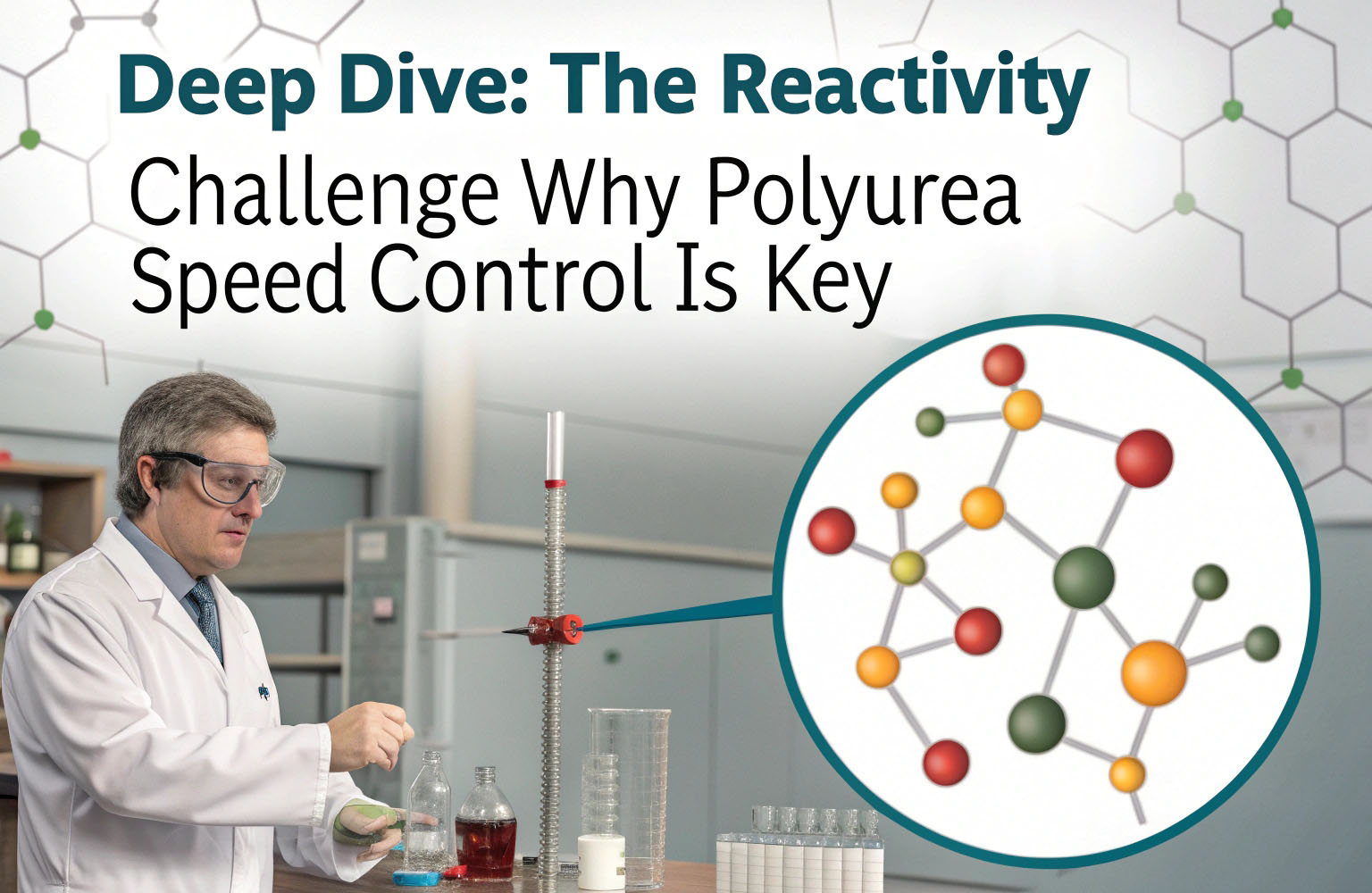Behind the Scenes: Why Epoxy, Polyurethane & Polyurea Manufacturing Scales Differ
When looking at protective coatings like epoxy, polyurethane (PU), and polyurea, you might notice a difference in where and how they seem to be made. It often appears that epoxy products can emerge from smaller workshops, while PU and polyurea, especially high-performance variants, are typically associated with larger manufacturing operations. This isn’t just a coincidence; it stems from fundamental differences in their chemistry, processing requirements, and the very nature of their reactions. Let’s explore why.

Epoxy: Simpler Chemistry, More Accessible Production
Epoxy coatings have become ubiquitous partly because their formulation and production can be relatively straightforward, lending themselves to smaller-scale operations:
- Simpler Curing Mechanism: The curing reaction of common epoxy resins (often mixed with amine or polyamide hardeners) can typically occur at room temperature or moderately elevated temperatures. Crucially, this reaction generally doesn’t produce volatile by-products. This allows for the formation of coherent, void-free coatings without needing high pressure or highly specialized containment.
- Less Demanding Equipment: Basic epoxy formulation primarily involves blending pre-made resins and hardeners with pigments and fillers. This can often be achieved with standard industrial mixers, scales, and packaging equipment found in well-equipped workshops, without the need for the high-pressure, high-temperature reactors or plural-component spray systems often associated with PU and polyurea.
- Component Stability: While proper handling is always necessary, the base epoxy resins and common hardeners are generally less acutely sensitive to ambient conditions (like atmospheric moisture) compared to the core components of PU and polyurea systems.
Polyurethane & Polyurea: Complexity Driving Larger Scale
In contrast, the production and handling of polyurethane and polyurea involve factors that necessitate more controlled environments, specialized equipment, and often, larger manufacturing facilities:
- Complex Core Chemistry & Raw Materials: Both PU and polyurea rely heavily on isocyanates reacting with either polyols (for PU) or amines/amides (for polyurea).
- Isocyanate Production: The initial synthesis of isocyanates themselves is a complex, capital-intensive process typically only undertaken by large chemical manufacturers due to safety requirements and economies of scale.
- Handling Isocyanates: Isocyanates are highly reactive, particularly with water/moisture. Even trace amounts can cause unwanted side reactions (like CO2 formation, leading to bubbles) or consume the reactant. This demands strictly controlled, dry manufacturing and storage conditions (e.g., nitrogen blanketing), requiring infrastructure less common in small workshops. They also pose health hazards requiring robust safety protocols.
- Specialized Processing Conditions: Applying these materials, especially high-performance spray polyurea, often involves:
- High Pressure & Temperature: To lower viscosity, ensure proper mixing, and facilitate the reaction, specialized plural-component equipment operating at high pressures and temperatures is frequently required.
- Precise Ratio Control: The stoichiometric balance (the ratio of isocyanate groups to amine/hydroxyl groups) is critical for performance. Plural component equipment ensures this precise metering and mixing at the point of application.
- Handling Solids/Viscosity: Some components might be solid at room temperature or have high viscosity, requiring specialized heating and blending equipment more readily available in larger facilities.
- Economics of Specialized Equipment: The significant investment in high-pressure plural component sprayers, controlled environment reactors, and sophisticated quality control instruments is more economically viable when amortized over the larger production volumes typical of factories.
Deep Dive: The Reactivity Challenge – Why Polyurea Speed Control is Key
The complexity of polyurea manufacturing is further highlighted when considering its reaction speed. Why is making fast-reacting polyurea easy, but making slow-reacting versions (like polyaspartics) so difficult? This ties directly into the need for advanced chemistry and controlled production:

-
Why "Fast" is Easy (The Natural State):
- Inherent High Reactivity: The core reaction between common isocyanates (especially aromatic ones like MDI) and standard primary amines (-NH₂) is extremely fast and efficient by nature. The amine is a strong nucleophile that attacks the isocyanate group vigorously, often needing no catalyst.
- "Default Setting": Using these common, cost-effective raw materials naturally yields very fast cure times (seconds). It’s the default outcome.
-
Why "Slow" is Difficult (Overcoming Nature):
- Need for Specialized Chemistry: To slow the reaction down for a workable pot life, chemists must deliberately hinder it. This involves using:
- Sterically Hindered Amines: Bulky groups near the amine site physically block the isocyanate’s approach. Polyaspartic esters are the prime example, using hindered secondary amines (>NH) to extend working time.
- Less Reactive Isocyanates: Aliphatic isocyanates (HDI, IPDI) react slower than aromatic ones and are often used in polyaspartics (also providing UV stability).
- Formulation Complexity & Cost: Creating these slower systems requires:
- Expensive Raw Materials: Hindered amines and aliphatic isocyanates cost more.
- Precise Balancing: Carefully formulating to extend pot life without compromising final cure and performance is technically challenging.
- Maintaining Performance: Ensuring hardness, flexibility, adhesion etc. remain optimal while slowing the reaction requires significant R&D and quality control.
- Need for Specialized Chemistry: To slow the reaction down for a workable pot life, chemists must deliberately hinder it. This involves using:
Conclusion: Chemistry and Scale Go Hand-in-Hand
The difference in manufacturing scale between epoxy and PU/polyurea isn’t arbitrary. Epoxy’s relatively simpler chemistry and less demanding processing allow formulation and production to be more accessible at smaller scales. Conversely, the reliance on complex and sensitive core components (especially isocyanates), the need for highly controlled processing conditions (high pressure/temp, moisture exclusion), intricate formulation challenges (like tuning polyurea’s reaction speed), and the economics of specialized equipment inherently push polyurethane and particularly polyurea production towards larger, more specialized manufacturing facilities. Understanding these background factors helps explain differences in product cost, availability, and application requirements in the coatings market.




